This is a look back at the last great ‘working class’ youth subculture…the original Skinhead movement of the late 1960’s.
Focusing on the development of this subculture in my home town of Tipton, I’ll be commenting on aspects of the culture such as the style, dress code and music that was introduced through the skinhead movement and what effect it had locally, and also, give a local reflection on what affects the political baggage (that done irreparable harm to this movement) had in my local area with the original skins.
I’ll also be comparing and offering alternative arguments to John Clarke’s findings and comments in the extract of his paper on the skinhead movement entitled ‘The Skinheads & The Magical Recovery Of Community’ that features in Hall & Jefferson’s Resistance Through Rituals (1996), and also from the same book Dick Hebdige’s paper entitled ‘Reggae, Rastas & Rudies.’
It was around 1969; I was 7 years old and football mad. On a Sunday afternoon the kids were I lived in Tipton all used to walk to a nearby park to enact our own version of Saturday’s fixtures. We, the ‘little uns’ were only allowed to go as long as the ‘big uns’ looked after us. So we used to gather (about 20 of us) and walk to the park through a pretty notorious area of Tipton with our ‘bodyguards’.
It was during these trips that I first noticed, preening themselves in front of groups of girls or sometimes just each other – Tipton’s Skins. My interest and fascination (and at times admiration) for this youth subculture started from here.
I’ve never had a real ‘down to the wood’ skinhead haircut, I’ve had my hair short but never a really close crop. But I’ve always loved the style of the original skinhead movement and the music that came out of it – Ska, Bluebeat and Reggae.
The attention to detail of the skins that I first remember was something that even as a 7 year old caught my eye. These guys were older – from the ages of about 14 and up. The older ones from about 16 to 17 onwards were the most impressive. They had a bit of money in their pockets and they ‘wore it well’ if you pardon the pun. Boots polished so you could see your face in them, Ben Sherman shirts, the creamy white Sta-Press trousers that when worn with a Cherry Red Doc Martin boot or brown Loafer shoes or Brogues certainly screamed ‘Oi look at me’ which people did, to then be greeted with ‘Wot yo’ lookin’ at’.

Wot yo’ lookin’ at
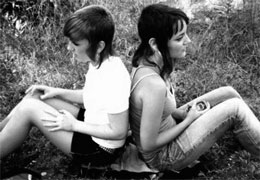
Skinhead Girls
This dress sense reflected the impressive turn out of the forefathers of the skinheads – Mods. Although the skins veered dramatically away from the ‘dandy’ appearance of the later part of the Mod movement that had moved into the Psychedelic era, they adapted the sussed streetwise smartness and attitude of Mod with as Clarke says ‘…certain core values of traditional working class culture,’
(1). The basic look echoed historical working class turn out – short-cropped hair, braces and boots. It was this image really that brought references to the past, what Clarke calls – ‘symbolic, rather than a ‘real’ attempt to recreate some aspects of the ‘parent’ culture’ .
(2). It’s shortly after this comment, on the following page, that Clarke moves on to say ‘the skinheads felt oppressed…they resented those who tried to get on and “give themselves false airs”, people from within the neighbourhood who had pretensions to social superiority:’.
(3). This is a point that I don’t agree with. It is a very generalized comment that gives the impression of all skinheads being ‘not bothered’, if I took it to an extreme I would argue that it suggests they were uneducated, mindless, under-achieving and having no ambition – exactly what most cartoon caricatures of skinheads usually depicts and how they are portrayed in most TV programmes, films etc, a good example would be (for those of you that can remember) the skinhead character in the Dick Emery show.
The skinhead look is one of the easiest to adopt, shave your hair, put braces on your trousers and done a pair of ‘bovver boots’ and you look like a skinhead. Many people adopted the look – cloned like sheep, but those that were ‘real’ had all the sus, subtleties and sharpness that in Mod terms would have seen them described as ‘Ace Faces’. As far as them ‘resenting those that tried to get on and “give themselves false airs”, … etc, ‘prime movers’ in the ‘original’ skinheads (and this applies very much to certain ‘faces’ around Tipton at that time) wanted to escape the mundane ‘working class’ existence of their parents.
They wanted better and different things to their parent’s generation; they did not conform to what their parents considered ‘the norm’. They embraced Ska and Bluebeat music that had been imported with the immigrant West Indian population, something that a lot of their parents made racist comments about. I do agree that they would be against people that “give themselves false airs”, but they certainly were not against ‘having an air’ about themselves.
To emphasize my point’s I’ll first of all refer to a classic text on the subculture. Although a fictional book Richard Allen’s Skinhead (1970) was written and very much set in the original era of the movement. I would argue that Allen captures ‘some’ of the frustration of ‘working class aspirations’ within the original movement and applies them to the fictional character of Joe Hawkins in the book. To quote, ‘What, he asked himself as he washed meticulously, had his dad gained from being a soft touch? The house they lived in was far removed from a palace … But he was foxy clever. He had a native intelligence that would carry him to heights his father had not inspired to reach. Plaistow and its dirt were not for Joe’.
(4). George Marshall’s Spirit of 69: Skinhead Bible (1994) also highlights the emphasis on being smart and sussed, i.e. ‘having an air about them’, he comments, ‘moving into the local dancehall … This was usually a time for wearing your best gear, when the cream of the crop could give any Mod or city gent a run for their money in the smartness stakes … All dressed up and somewhere to go.’
(5). The notions of ‘territory’ and ‘community’ that Clarke speaks about can be seen in the spraying of graffiti such as, for example, Tipton Skins Rule being sprayed on walls, or Dudley Skins or Smethwick Skins etc, the defence of a football teams ‘home end ‘ of their ground, The Brummie Road End at West Brom, the North Bank at Wolves, The Holt End at the Villa etc, all the origins of the ‘football hooligan mob’ can be traced back to the original skinhead gangs, but I would still argue that for the ‘Ace Faces’ / ‘Prime Movers’ call them what you will – the ‘elite’ – it was more important being a ‘Skinhead’ in Tipton than being a ‘Tipton’ Skinhead.
Clarke’s paper is very much a generalization of skinheads. John Hughson who refers to Clarke’s findings in his own article on football hooligans based in Australia called ‘The Bad Blue Boys and the ‘Magical Recovery’ of John Clarke’ (this is featured in Armstrong & Giulianotti’s Entering the Field (1997), also comments on Clarke’s generalization of skinheads, to quote, ‘However in coming to this conclusion Clarke tends to exaggerate the skinhead as a remnant of the past without fully explaining what being a skinhead means to the person living in the subculture.’
(6). The skinhead image is a tough image – I was going to say masculine but there were Skinhead Girls as well, who as far as displaying gender characteristics, could cover the whole spectrum from masculinity (some had very short hair and looked as menacing as any male skin) to femininity (some wore the classic ‘feather cut’ which sent many a heart fluttering), but that’s another essay.
Tough was the image, a tough image in a tough community is desirable, so lots of people cloned the haircut and boots but there was much more to it than that. Style and dress sense were a collaboration of – as I said before, an historical working class representation in cropped hair, braces and boots, bricolaged with the style and dress sense of 60’s Mods, but also the emergence of the West Indian ‘Rude Boy’ culture was incorporated into it as well. The trousers being turned up to show the boots – was originally just a subtle turn up above the ankle, raised about an inch. This was a copy of the Rude Boys trouser style displaying bright coloured socks.
The influence of the ‘Rude Boy’ culture on skinheads and in far more ways than just the musical influence, as been noted by Dick Hebdige in his book Subculture: The Meaning of Style (1979). He comments – ‘the clean cut, neatly pressed delinquent look owed at least as much to the rude boys as it did to the ‘formalized and very “hard” stereotypes of the white lumpen males…through consorting with the West Indians at the local youth clubs and on the street corners, by copying their mannerisms, adopting their curses, dancing to their music…’
(7). A story involving Desmond Decker from George Marshall’s Spirit of 69 (1994) book again adds weight to this. It features an interview with a guy called Tony Cousins who ran the Creole booking agency that handled Desmond Decker, he states, “When we bought Desmond Decker over we gave him a suit, but he insisted that the bottom six inches of the trousers should be cut off. Then the kids began to follow him, they rolled up their trousers and had their hair cut short. “
(8). Levi Jeans and Sta-Press trousers were the preferred day wear, the skins opting for tonic mohair suits, three buttoned (similar to the Mods but the jacket was slightly longer than the Italian style box jacket that they wore). Shoes with the suits (I have it on authority that boots with your suit was a no – no) would be ‘Royal’ Brogues or ‘Royals’ as they became known (Faith Royal was the company that made them) these were lace up shoes with tiny holes patterning them. The other favoured shoe option being Loafers (which were slip on shoes with small toggles on the top).
Monkey boots (a laced up ankle boot) were another favourite but usually with the younger male skin or the skinhead girls. Again the small attention to detail set some skins way above the clones, detail such as the handkerchief and stud in the breast pocket of the coat. This was later to become more common on the wearing of Crombie overcoats. I remember little touches on trousers such as adding a pocket watch chain, again this can be seen as ‘bricolaging’ the past. Some real ‘spiv’ ones I remember seeing wearing silk scarf’s (Tootal brand) some even cravats with their Ben Sherman shirts or the ‘granddad shirt’ which I think was called a union shirt.
The Levi jacket became very popular. On the early jackets they would remove the label from inside the collar and sew it on the front of the jacket above the breast pocket. Another was the Harrington Jacket a follow on from the Mod era. When the winter nights set in, the Crombie overcoat (as mentioned earlier) was worn or sheepskin coats became very popular (with the cuff rolled over to show the lining), all these little subtle fashion styles were used to the up-most affect.
In my own area and amongst the original skins that I new of, the music was a big attraction and received some very devoted followers. In fact it was the music that was the main attraction (for a short time) originally, before football took over with the cloned skinhead masses. The obtaining of original releases on labels such as Bluebeat, Trojan, Treasure Isle etc, became the way of impressing fellow faces.
Two of the originals in my hometown went on to DJ-ing Reggae & Soul nights at local youth clubs and pub function rooms. One branching out farther a field to attend ‘blues’ parties in Beeches Road, West Bromwich and clubs in Handsworth, Birmingham, such as The Santa Rosa Club and The Ridgeway Georgian. Also to maintain that all illusive grip on exclusive ‘news’ as far as new releases and where some of the bands were playing locally, it was crucial to listen to Radio Birmingham on a Sunday afternoon to one of only two Reggae shows broadcast in the country ‘Reggae – Reggae’ presented by Barry Curtis & Tubby Stan, the other show was broadcast on Radio London.
With the influx of West Indian immigrants to the area of Birmingham and the Black Country it made it one of the biggest areas with (to use a broadcasting term) a ‘minority programming community’. This proved valuable listening to the skinhead reggae enthusiast. Again Marshall’s Spirit of 69 book reports on the devotion of some of the original skins to the music ‘A lot of skinheads became serious collectors of Jamaican music and would spend every spare minute, not to mention every spare penny, checking out the latest releases down at the local reggae store.’
(9).West Bromwich had such a store that dealt in imports of the Pama / Crab label – Stan Willets’ Reggae Alley. Dudley had Feedhams Record. Wolverhampton also hosted reggae nights with touring bands playing at The Lafayette Club, The Pioneers gig being one memorable occasion for a couple of the original Tipton Skins.
Clarke’s study of skinheads took place in the Birmingham / Black Country area during the original period (late 60’s early 70’s), he mentions mobs from the Quinton area of Birmingham and the Smethwick area of West Bromwich in his paper. His analysis comments on two areas of skinhead activities that became the staple diet of many tabloid reports on the subculture from then on. The all too familiar ‘racist’ and ‘anti gay’ activities of what I would suggest were prime examples of ‘skinhead clone types’, to quote, ‘This concern with toughness was also involved in the two other most publicised skinhead activities – “Paki-bashing” and “Queer-bashing”.
(10). Obviously these kinds of activities are food and drink to Fleet St and so got publicised and condemned (rightly so) by society. I asked one of the original Tipton Skinheads how much ‘racism’ was rife at the time, considering as well there had been inflammatory remarks made in the area from politicians at the time such as Wolverhampton based MP Enoch Powell’s ‘Rivers of Blood’ speech and a comment from a local Conservative contesting the Labour held seat in Smethwick during the late 60’s which was along the lines of “If you want a Paki for a neighbour – Vote Labour’. He commented: –
‘I was hanging about with a black (West Indian) girl at the time, that I’d met at a reggae night in West Brom and I never had any racist comments from fellow skins at that time. Any hassle you had was from older white guys on a bus for example, pissed up, would see me with her and may get mouthy and vice versa if it was older West Indians and then they’d say something to her, or if we were in one of the reggae clubs in Handsworth, now and again some one got their ‘arse in their hand’ about us being together. But in our own area of Tipton I don’t remember any racist incidents really, either with West Indians or Asians; I was just passionate about the music.’
(11). Another comment again that gives added fuel to the racist skinhead image and racial unrest between skinheads and the West Indian population of Birmingham this time, is from the footnotes page of Dick Hebdige’s article ‘Reggae, Rastas & Rudies’ which is also featured in the book Resistance Through Rituals (1996). He notes: –
‘The skinhead style, of course, survived into the 70’s particularly in the Midlands …but it did not maintain its early strong links with black culture. Skinheads in Birmingham (where race relations have always left a lot to be desired) were often openly hostile to West Indians, and football tended to take over from reggae as the central preoccupation of the skinhead group.’
(12). I once again find these comments very generalizing and can offer this argument against all skinheads being tarred with the same brush. Also the difference in how the actions of members of this subculture in surrounding towns and city’s to Birmingham, offers an alternative to the image constructed by these comments and the points they make.
When the skinheads started to die out around 1973 / 74 they were replaced by the ‘boot boy’, longer hair and wider trousers such as ‘Oxford Bags’ and ‘Skinner Jeans’ accompanied the Doc Martins. From the late 60’s skinhead days and right up to this present day, at West Broms football ground, the home end of the ground ‘The Brummie Road’ has sang a collection of football chants to accompany the old reggae classic The Liquidator.
The club has had a great relationship with the West Indian community from the late 60’s right up to this present day. Where the ground is situated is right on the border with Handsworth and since the 60’s has attracted a lot of support from the West Indian community in that area, and also across all of the Black Country and Birmingham area.
It pioneered the signing of black players and in the late 1970’s included three of the most popular players of that era, Cyrille Regis, Brendan Batson and the late great Laurie Cunningham. So at West Brom for example, we had a recognition of the local West Indian culture in the coming together of both communities on the terraces. The original Brummie Road skinhead mob that included gangs of skins from all over the local area mingled with young black guys, the combined affection for reggae music entering the realms of football fandom terrace chants with the adoption of The Liquidator as ‘an Albion song’.

Laurie Cunningham, Cyrille Regis and Brendon Batson
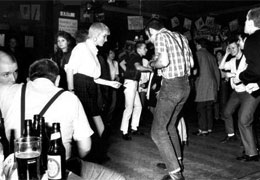
Skinhead Moonstomp
Football overtaking reggae music as the mane preoccupation with skinheads didn’t alter any respect for black culture there. Hebdige’s comments on skinheads being ‘openly hostile to West Indians’ in Birmingham certainly wasn’t the case in West Bromwich as far as my recollection goes and that of others I’ve asked.
The other area I’d like to bring up as evidence of a more racially harmonious history with the skinhead culture and black culture, ironically, is situated at the other end of Birmingham, that area being Coventry. Especially when the skinhead / rude boy cross over got rejuvenated in the emergence of the Two Tone record label and bands like The Specials and The Selecter in the late 1970’s.
I look upon the original skinhead subculture as being the last great working class subculture. Punk was fantastic but included to a certain extent all classes of society, Malcolm McLaren for example was no ‘East Ender’ neither was Vivien Westwood and there were a lot of ‘Art School’ types in the movement. The original Skinheads on the other hand were down the social ladder in etiquette but in pole position as far as being sharp, sussed and street wise.
So in the words of ‘Symarips – Boss skinhead’
“I want all you skinheads to get up on your feet, put your braces together and your boots on your feet and give me some of that old Moonstomping.”
Referencing
(1). Clarke, J. (1976). ‘The Skinheads & The Magical Recovery Of Community.’ p99, in Hall, S. & Jefferson, T. (eds), (1996) Resistance Through Rituals
. Routledge, London.
(2). As above.
(3). As above – p100.
(4). Allen, R. (1997). Skinhead
S T Publishing, Lockerbie, Scotland. (originally published by New English Library – 1970) p13.
(5). Marshall, G. (1994). Spirit of 69: Skinhead Bible
. S T Publishing, Lockerbie, Scotland. p20/21.
(6). Hughson, J. (1997), ‘The Bad Blue Boys and the ‘Magical Recovery’ of John Clarke.’ P241, in Armstrong, G. & Giulianotti, R. (eds) Entering the Field
. Oxford, Berg.
(7). Hebdige, D. (1991) Subculture: The Meaning of Style
. Routledge, London. p56.
(8). Marshall, G. (1994). Spirit of 69: Skinhead Bible
. S T Publishing, Lockerbie, Scotland. p12.
(9). As above – p28.
(10). Clarke, J. (1976). ‘The Skinheads & The Magical Recovery Of Community.’ P101/102, in Hall, S. & Jefferson, T. (eds), (1996) Resistance Through Rituals
. Routledge, London
(11). Cox, E. (2002) Interview with Eric Cox – original Tipton Skinhead. 27/ 1/ 02.
(12). Hebdige, D. (1974). ‘Reggae, Rastas & Rudies’ p154, in Hall, S. & Jefferson, T. (eds), (1996), Resistance Through Rituals
. Routledge, London.
(13). Naismith & Ellis. (1969) ‘Skinhead Moonstomp
’ – Symarip. B & C Music Publishing. Trojan Records – London.
Bibliography
Books:
Allen, R. (1997) Skinhead
. S T Publishing, Lockerbie, Scotland
Armstrong, G & Giulianotti, R. (eds), (1997) Entering the Field
. Oxford, Berg.
Hall, S. & Jefferson, T. (eds), (1996) Resistance Through Rituals
. Routledge, London.
Hebdige, D. (1991). Subculture: The Meaning of Style
. Routledge, London.
Gelder, K. & Thornton, S. (eds), (1997). The Subcultures Reader
. Routledge, London.
Marshall, G. (1994). Spirit of 69: Skinhead Bible
. S T Publishing, Lockerbie,Scotland.
Interview:
Cox, E. (2002). Interview with Eric Cox – original Tipton Skinhead. 27/ 1/ 02.
LP:
Symarip (1969). Skinhead Moonstomp
. Trojan Records, London.
Copyright
Copyright Gary O’Dea 2002 – not to be copied or used without the permission of Copyright holder.



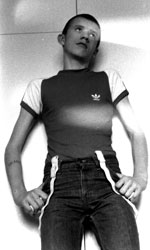
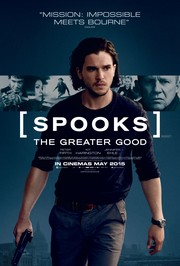

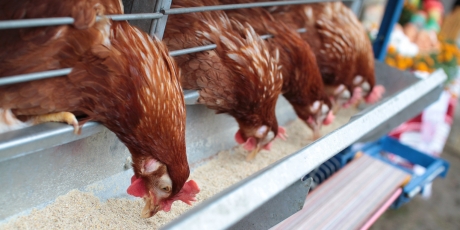

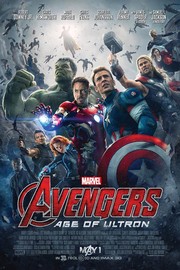













Thank you. For once a balanced and well informed article on true skinhead culture. I enjoyed reading this and it certainly resonates with my experiences in Luton.
Thanks for the article found it really interesting. Been a rudeboy skin and still am,I always say to the people in circle of rudeboy girls and skinhead aswell as northern souled.keep the faith and keep it strong..!
Just loved reading this !! Thankyou
Good article rings true with all the knowledge I have of skinheads, I’m trying to pin down info about when the term skinhead was first used in terms of British subculture. Somewhere in the annals of my memory I seem to recall the Chelsea Bovver boys who thought of themselves as being Mods in the 1966-67 period being labelled as ‘Skinheads’ by one of the national newspapers – Daily Mirror or Herald? Is there any truth to this?
Thank you for this informative article. Even though I am too young to have experienced the birth of the Skinhead movement, I am ‘only’ 40 years old (Born 1979), I have been a Skinhead for the past 20 years now…It’s who I am, can’t change that.
I am happy that people are generally alright with me being a Skinhead, we do have that stigma on us that people think all Skinheads are racists..But that’s just bollo…rubbish.
Stay strong!
%ig_un%,
Want to be Instagram famous?
Have you ever thought about what it feels like to be an Instagram Influencer?
Imagine: It’s Friday morning and you’ve promised yourself you’d go for a run today.
You spring up to check your phone.
Opening up Instagram.
You‘re surprised at what is waiting for you: Over 832 likes on a single one of your pictures! There, you see a flurry of likes on your pictures–over 832 on a single photo alone.
You hop out of your bed, stalk to the kitchen. You want a drink, so you place the kettle on for some tea, and check Instagram again.
Bam! Another 87 likes.
And here comes another message. It’s from one of your many fans asking about your life, and giving you daps on your twelve official month of eating healthy.
A smile appears on your face as you see another message. This person emailed you to let you know she loves your posts.
While you sip your tea, you start typing up your response. But then your cell buzzes.
Wow, ANOTHER message. You close your cell and throw it in the bag. Time for the gym.
Anyways, you get the point. This is the life of an Instagram celebrity. I should know, because I’ve made many of them.
My job is to take people from Instagram no one to Insta-celebrity. (It sounds ridiculous, but results do not lie.)
Now, what if you raised your popularity by 100%, or 1000%?
It is not complicated to do, although almost no one does. Just hit up our website. There, you’ll learn how to garner Instagram likes and followers like mad…easily.
In just minutes after posting, you have your images piled with likes.
The “Top Post” section, all of a sudden, doesn’t seem that far away.
Sound too good for reality? Here’s what you’ve got to do to get a taste:
1. Visit https://picturestorm.icu
2. Plug in your Instagram username.
3. The three pictures you posted last will receive 10 – 15 likes. Just like that.
Being a everyday name on that page will accelerate your growth 10x, easy. But if you want the fame, you’ve got to reach for it. Are you ready?
See you on the flipside.